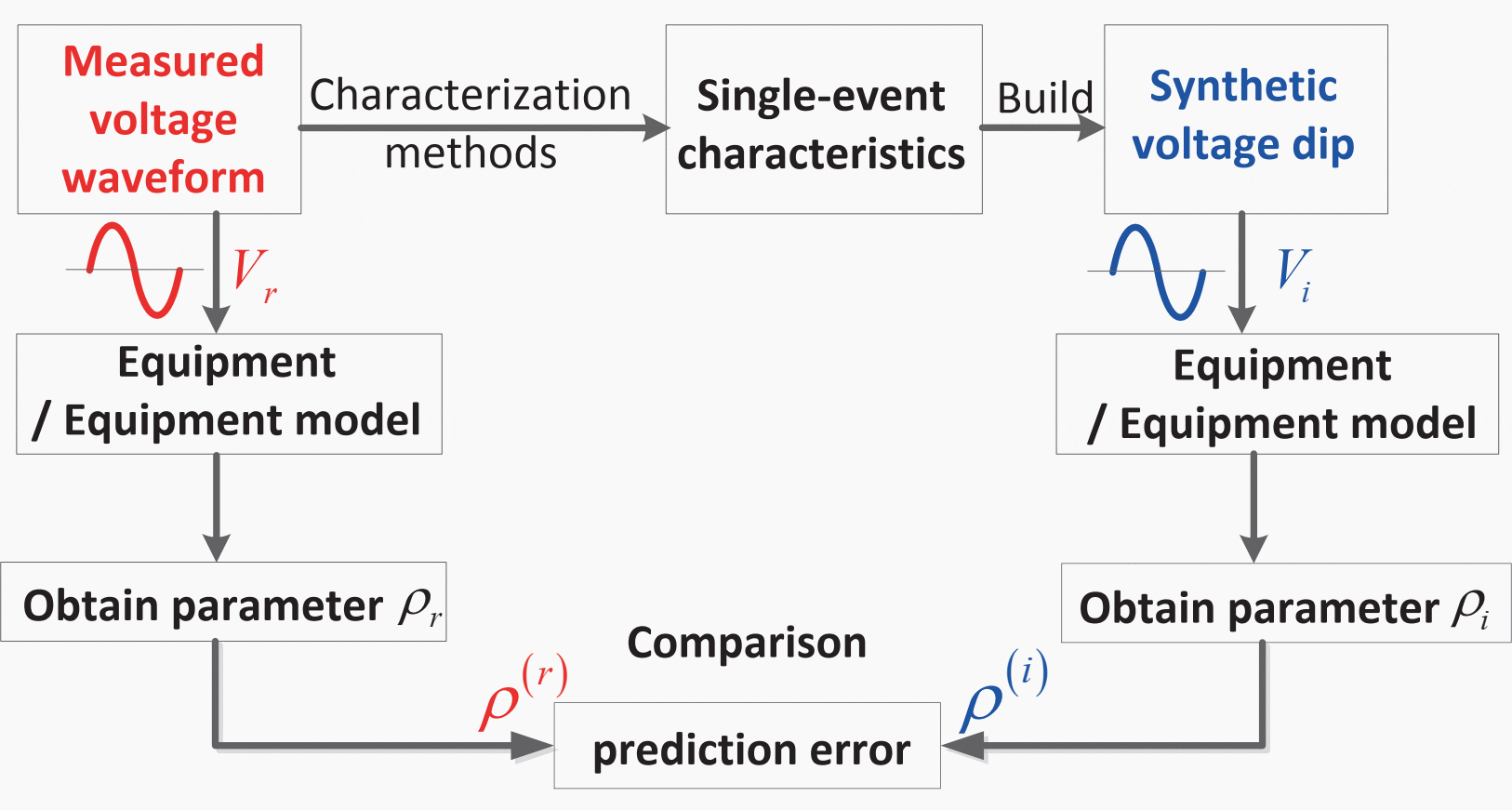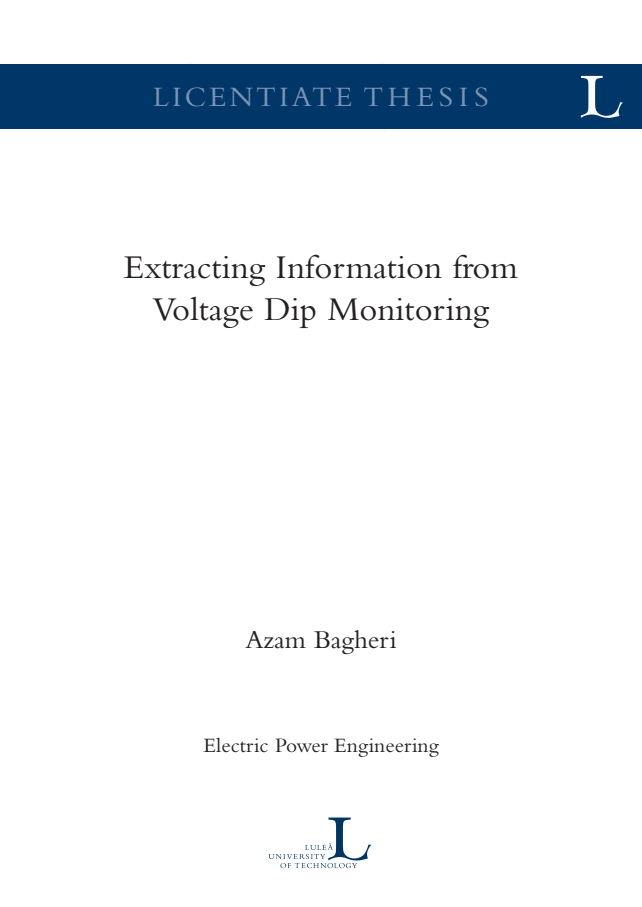Voltage dip characterization
Voltage dip characterization aims at qualification and quantification of voltage dips through several characteristics so that the calculated characteristics provide information about the severity of the event and also about the underlying cause of the event and the power system status during the event.

Further it is expected that the calculated characteristics have predictive value regarding the dip impacts on sensitive loads and aid in collecting statistics about voltage dips.
Regarding these goals a lot of methods for voltage dip characterization have been proposed by the literature. Including additional voltage dip characteristics will increase the accuracy of the characterization but at the cost of increased complexity, among others with interpretation of the results.
A distinction should be made between two different types of voltage dip characteristics. Some characteristics are calculated as single values for one event, where residual voltage and voltage dip duration are the ones most commonly used. Other characteristics are calculated as a function of time, these are referred as “characteristics versus time”.
A systematic comparison approach is required to decide how best to obtain a single-event characteristic from the characteristic versus time.

Voltage dips are described, according to IEC and IEEE standards, by one voltage and one duration. The advantage of this is that the characterization is simple and that both interpretation and use in statistical methods are simple.
There are disadvantages with this method as well: essential information is missing when it concerns the use of characteristics of individual dips and dip statistics to predict equipment performance.
Multi-stage voltage dips are a result of fault development (e.g. from single-phase to two-phase) or of multistage fault clearing and they present different levels of voltage magnitude during the event. The proposed single-event characteristics are not adequate to characterize this type of voltage dips.
It is recommended by an international working group [5] that each stage is characterized individually and single-value characteristics are derived for each stage.
| Title: | Voltage dips as a very important power quality issue – Azam Bagheri at Luleå University of Technology, Department of Engineering Sciences and Mathematics, Division of Energy Science |
| Format: | |
| Size: | 12.0 MB |
| Pages: | 120 |
| Download: | Right here | Video Courses | Membership | Download Updates |


